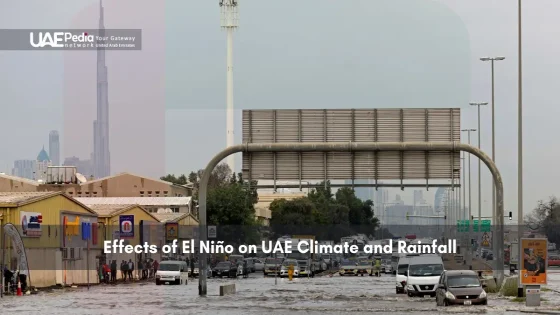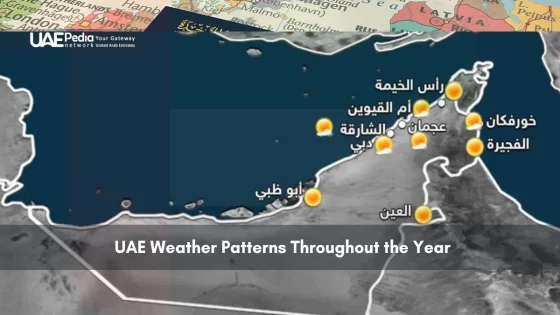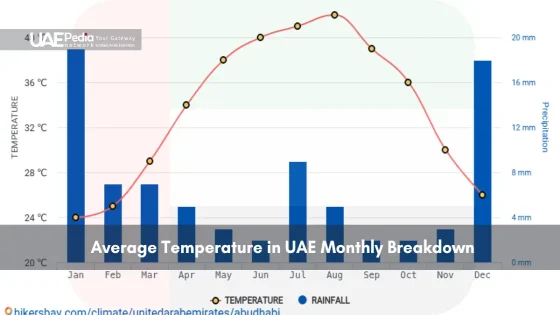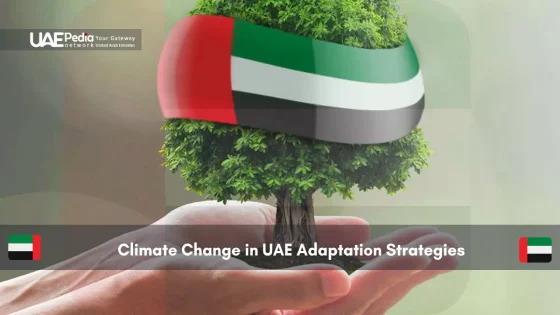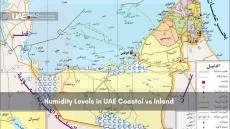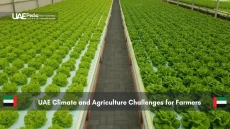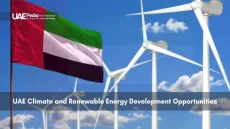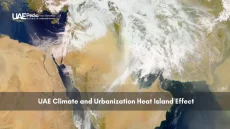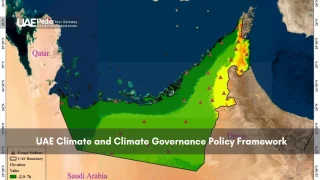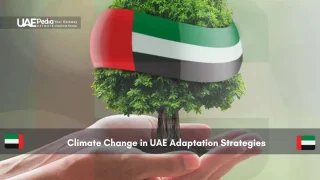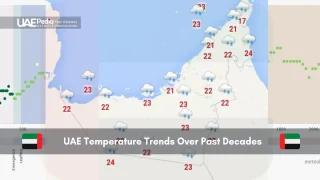April 15, 2024 rewrote weather history books when Dubai received a year’s worth of rain in hours – the heaviest single-day deluge since 1949. Streets became rivers, flights halted mid-journey, and communities from Abu Dhabi to Muscat faced unprecedented challenges. This wasn’t just another spring shower, but a climate puzzle piece connecting ancient weather patterns to our rapidly changing world.
Scientists from six countries now ask: could this extreme event reveal new truths about warming oceans and atmospheric shifts? Their analysis focuses on RX1day measurements – a method tracking daily precipitation peaks – showing how moisture-packed clouds behaved unlike any recorded in modern Gulf history.
We’ll walk through three revealing layers:
- How seasonal wind patterns collided with human-driven climate shifts
- Why arid regions face amplified risks during specific ocean temperature cycles
- What disaster response teams learned from coordinating across emirates
This isn’t about fear-mongering, but understanding. As desert blooms follow rare rains, so too might solutions emerge from studying nature’s dramatic displays.
Understanding the Effects of El Niño on UAE climate
Picture Earth’s climate as a giant mood ring—shifting hues reveal hidden patterns shaping our weather. One of its most dramatic color changes comes from El Niño, a Pacific Ocean phenomenon that sends ripples across continents.
Background of the El Niño Phenomenon
Every 2-7 years, warm water near South America resets global weather like a planetary thermostat. This natural cycle—nicknamed “the Little Boy” by Peruvian fishermen—redistributes heat and moisture through jet streams. When El Niño’s warm phase activates, it often pushes moisture-laden air toward Arabia’s eastern coast.
Historical Rainfall Trends in the UAE
Desert sands tell stories of extremes. While the Emirates average just 4 inches of annual rain, records reveal spikes during El Niño years. The 1982 event brought flash floods to Ras Al Khaimah, while 1998 saw Dubai’s wadis overflow—both aligning with strong Pacific warming phases.
Scientists track these anomalies using RX1day, a metric capturing maximum daily precipitation. Data shows 70% of the region’s heavy deluges since 1950 occurred during El Niño cycles. Yet recent storms carry 15-20% more moisture—a fingerprint of warmer air holding extra water vapor.
As one meteorologist quipped: “Nature’s old rhythms now dance to a new beat.” While El Niño remains a natural player, its modern performances seem amplified by backstage changes in our global climate system.
Analyzing Recent Extreme Rainfall and Flooding Events
Imagine your city transformed into a waterpark overnight—that’s what April 2024 delivered to Dubai. Between dawn on the 14th and dusk on the 15th, weather stations recorded 254mm of rain—triple the desert nation’s annual average. Streets became rapids, palm trees swayed like seaweed, and the Burj Khalifa’s observation deck vanished behind curtains of water.
The Perfect Storm by Numbers
This wasn’t just another downpour. The 24-hour deluge broke records set in 1949, with some areas receiving 50% more rain than their previous wettest day. Dubai International Airport’s runways turned into lakes, forcing 1,244 flight cancellations. Over 2,500 emergency calls flooded response centers as drivers abandoned vehicles on Sheikh Zayed Road.
Drains, Planes, and Emergency Chains
Urban drainage systems built for occasional drizzle buckled under monsoon-level flows. “Our pumps worked like marathon runners—until they cramped,” confessed one Dubai Municipality engineer. Metro stations became temporary shelters, while delivery apps pivoted to boat routes in waterlogged neighborhoods.
Meteorologists later identified a rare cocktail: El Niño-driven moisture met air heated by global warming, creating clouds that dumped 15% more water than similar 20th-century storms. As climate researcher Dr. Amal Nassar noted: “This event wore two hats—one natural, one human-made.”
Oman’s experience proved equally dramatic, with 19 fatalities highlighting regional vulnerabilities. Yet amid the chaos, silver linings emerged. Cross-emirate emergency alerts reached 92% of mobile users within minutes—a system refined after 2017 floods. Lessons now shape infrastructure upgrades, from elevated highway drains to AI-powered flood modeling.
Scientific Insights and Climate Change Influences
Think of Earth’s atmosphere as a giant baking oven—every degree we crank up the heat changes how ingredients interact. Recent studies reveal human activities now bake extra moisture into weather systems, reshaping rain patterns across the Arabian Peninsula.
When Heat Meets Humidity
Warmer air acts like a thirsty sponge. For every 1.2°C temperature rise—our current global warming level—the atmosphere holds 8.4% more water vapor. This turbocharges rain clouds, turning what might’ve been a strong shower into a record-breaking deluge. April’s historic Dubai storm carried enough moisture to fill 300,000 Olympic pools.
| Temperature Rise | Moisture Increase | Rainfall Intensity |
|---|---|---|
| +1.2°C | 8.4% | 10-40% stronger |
| +2.0°C | 14% | 25-70% stronger |
Models vs Reality
Climate predictions resemble weather apps—they’re better at broad trends than pinpoint accuracy. While 83% of scientists agree warming increases heavy rains, regional forecasts remain tricky. As researcher Fatima Al-Mansoori notes: “Our models see the forest, but desert palms sway unpredictably.”
Fossil Fuels to Floodwaters
Burning oil and gas doesn’t just warm the air—it rewires cloud behavior. International teams traced April’s extreme rain to three factors:
- Warmer Indian Ocean waters feeding storms
- Urban heat islands accelerating cloud formation
- Shifting wind patterns over the Gulf
The takeaway? Nature’s playing a new game. Cities built for arid climates now need drainage systems that handle monsoon-like downpours. As one engineer put it: “Our grandfathers designed for camels—we’re designing for kayaks.”
Regional Impacts and Disaster Management in the Arabian Peninsula
Like desert wildflowers after rare rains, cities across the Gulf bloomed with unexpected challenges during April’s deluge. While headlines focused on Dubai’s submerged supercars, communities from Muscat to Riyadh faced their own waterlogged realities.
When Skyscrapers Meet Sandstorms
In Dubai, luxury districts built on former dunes became cascading waterfalls. Across the border, Oman’s mountain villages saw ancient wadis swallow roads whole. Saudi Arabia’s eastern provinces—where 63% of urban areas lack storm drains—logged their highest 24-hour rainfall since 2005.
The crisis exposed a regional truth: 4 in 5 Gulf residents live where paved surfaces outpace drainage planning. As one Abu Dhabi engineer noted: “Our cities wear concrete overcoats—great for sun protection, terrible during cloudbursts.”
From Majlis Debates to Mobile Alerts
Post-flood innovations are reshaping the landscape:
- Dubai’s new smart tunnels redirect water using AI-powered flow models
- Oman’s emergency app now reaches 94% of mobile users in under 90 seconds
- Saudi planners mandate permeable pavement for all new desert developments
Yet challenges linger. Traditional majlis gatherings buzz with debates over balancing rapid growth and climate resilience. A recent analysis suggests combining Emirati tech investment with Omani mountain-terrace wisdom could create adaptable drainage solutions.
The takeaway? Arid regions teach us to expect surprises. By weaving ancient water-harvesting techniques with modern meteorology, Gulf nations are writing a new playbook for dryland survival.
Final Thoughts on Moving Forward with Climate Resilience
History often writes its lessons in water—April’s floods taught us resilience can bloom in arid soil. While natural cycles like Pacific warming phases set the stage, human-driven shifts turned this weather drama into a record-breaker. Communities across the Arabian Peninsula now face a dual reality: honor ancient desert wisdom while racing to outpace modern climate challenges.
Three truths guide our path forward. First, cities built for sunbaked days need drainage systems ready for climate change’s role in amplifying storms. Second, regional cooperation—like Oman’s emergency apps and Dubai’s AI flood models—proves more vital than ever. Third, every resident plays a part, whether supporting permeable pavement projects or sharing traditional water-saving techniques.
Researchers remind us: the atmosphere now holds 8.4% more moisture than pre-industrial times. This isn’t doom-saying—it’s a design brief. By blending Emirati innovation with global insights, we’re crafting cities where palm trees and preparedness grow side by side.
Ready to join the effort? Start small. Track local sustainability initiatives. Share flood-prep tips with neighbors. Celebrate communities reducing fossil fuel use. Together, we’ll write the next chapter—one where arid regions lead the climate resilience story.
El Niño shifts Pacific Ocean temperatures, which can alter global wind and pressure systems. For the UAE, this often means warmer winters and shifts in rainfall timing—sometimes intensifying storms over the Arabian Peninsula when combined with moisture from nearby seas.
While El Niño played a role, studies suggest human-induced warming amplified the event. Warmer air holds more moisture, and rising sea temperatures near the UAE likely supercharged rainfall rates by 10-40%, according to World Weather Attribution researchers.
Geography matters! Saudi Arabia’s Red Sea coast and mountainous regions like Asir catch moisture differently than the UAE’s Gulf-facing cities. Urban sprawl in Dubai and Abu Dhabi also increases flood risks compared to less paved areas in neighboring countries.
The UAE’s cloud-seeding program enhances existing storms but doesn’t create them. April 2024’s record-breaking rain came from a large, natural weather system. Seeding might boost rainfall by 15-25% in optimal conditions—not enough to cause flooding alone.
After 2024’s floods, projects accelerated: expanding stormwater tunnels near Palm Jumeirah, raising road levels in Business Bay, and restoring natural floodplains in Hatta. Oman’s new dam networks show regional collaboration is growing too.
Global warming from greenhouse gases affects everyone, including the UAE. While desert nations contribute less per capita than industrial giants, rising emissions worldwide intensify El Niño’s impacts here—making climate action a shared responsibility.
Climate models suggest stronger temperature swings between El Niño and La Niña phases. Combined with warming oceans, this could mean sporadic but heavier rains—think “feast or famine” cycles. Preparedness, not panic, is key for resilience.
